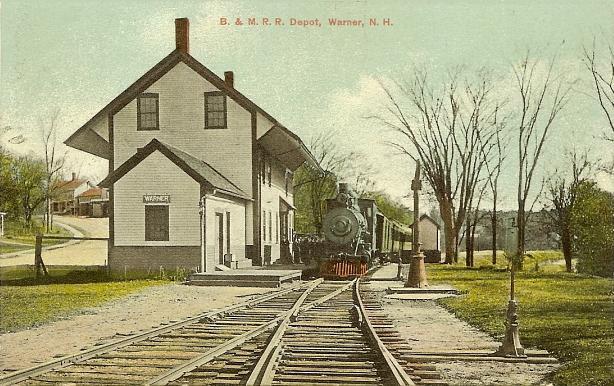Introduction
Stewart Peak, located in the picturesque town of Warner, New Hampshire, is not just another peak in the New England landscape; it is a site imbued with historical significance and natural beauty. While the peak itself stands at an elevation of approximately 1,822 feet, its importance goes beyond mere topography. The area surrounding Stewart Peak has been shaped by Indigenous cultures, European settlement, and significant events that have defined the region’s History of Stewart Peak, Warner, NH. This article explores the historical aspects of Stewart Peak, its geological features, and the role it has played in the broader narrative of Warner and New Hampshire.
Indigenous History
Before European settlers arrived in the early 17th century, the region surrounding Stewart Peak was inhabited by Indigenous peoples, primarily the Abenaki tribe. The Abenaki utilized the abundant resources of the land for sustenance, relying on fishing, hunting, and gathering. They traversed the area, with Stewart Peak likely serving as a lookout point due to its elevation and strategic position. The peak’s prominence in the landscape would have made it an essential part of their navigation and cultural identity.
The Abenaki’s deep connection to the land is evidenced in their traditions and oral histories, which often emphasize the spiritual significance of natural features like mountains and rivers. The name “Stewart Peak” itself reflects the later European influence, but it is essential to recognize the longstanding presence of Indigenous cultures in the area, which played a vital role in shaping the landscape long before European settlers arrived.
European Settlement
The early 18th century marked a turning point for the region as European settlers began to arrive, seeking new opportunities in the New World. Warner was officially incorporated in 1773, and with its fertile valleys and abundant resources, it quickly attracted settlers. The area’s natural beauty and strategic location made it an appealing choice for farming, and soon, small communities began to flourish.
The peak was named after a prominent local family, the Stewarts, who played a significant role in the community’s development. The Stewart family, like many others in the area, engaged in agriculture and timber harvesting, taking advantage of the lush forests and fertile soil surrounding the peak. Their contributions to the local economy were substantial, and they became key figures in Warner’s history.
The Industrial Era
As the 19th century unfolded, Warner began to evolve from a primarily agrarian society to one that embraced industry. The construction of railroads and roads during this period facilitated trade and transportation, allowing for the movement of goods and resources. The peak remained a silent witness to this transformation, serving as a natural landmark for travelers and a point of reference for the burgeoning industries in the area.
During this time, the lumber industry thrived, capitalizing on the abundant forests surrounding Stewart Peak. The timber harvested from the region fueled both local and national economies. Logging camps and mills sprung up, and the once tranquil landscape was altered by human activity. Despite these changes, Stewart Peak and its surroundings retained much of their natural beauty, providing a refuge for wildlife and a retreat for those seeking solace in nature.
The Role of Stewart Peak in Local Culture
Throughout the late 19th and early 20th centuries, Stewart Peak became a beloved symbol of Warner’s natural heritage. As the industrial boom gave way to a more leisure-oriented society, the peak drew hikers, nature lovers, and families seeking outdoor adventures. Trails were developed, and the peak became a popular destination for those wishing to experience the breathtaking views of the surrounding mountains, valleys, and lakes.
Local organizations and community groups began to recognize the importance of preserving the natural environment, leading to conservation efforts aimed at protecting the area’s unique ecosystems. Stewart Peak served as a focal point for these initiatives, emphasizing the need to balance development with environmental stewardship.
The Conservation Movement
The latter half of the 20th century witnessed a surge in the conservation movement across the United States, with many areas, including Stewart Peak, becoming the focus of preservation efforts. In Warner, community members rallied to protect the natural landscape from encroaching development, advocating for sustainable practices that would ensure the integrity of the area for future generations.
Local environmental organizations worked to educate the public about the ecological significance of Stewart Peak, highlighting its role as a habitat for various species of flora and fauna. Hiking trails were maintained and improved, allowing residents and visitors alike to enjoy the natural beauty of the peak while promoting a sense of community and connection to the environment.
Present Day
Today, Stewart Peak is a cherished landmark in Warner, New Hampshire, symbolizing the town’s rich history and its commitment to preserving its natural heritage. The peak remains a popular destination for hikers and outdoor enthusiasts, offering trails that range from easy walks to more challenging hikes. The summit provides panoramic views of the surrounding landscape, attracting nature lovers, photographers, and adventurers alike.
In recent years, the town has continued to prioritize conservation efforts, working with local organizations to maintain the integrity of Stewart Peak and its surroundings. Initiatives aimed at promoting outdoor education, environmental awareness, and sustainable tourism have further solidified the peak’s status as an essential component of Warner’s identity.
Conclusion
The History of Stewart Peak, Warner, NH is a tapestry woven from the threads of Indigenous culture, European settlement, industrial development, and conservation efforts. As Warner, New Hampshire, continues to grow and evolve, Stewart Peak remains a steadfast reminder of the town’s past and a symbol of its commitment to preserving the natural beauty that defines it. From its origins as a lookout point for Indigenous peoples to its current role as a destination for outdoor enthusiasts, Stewart Peak embodies the rich history and spirit of the community that surrounds it. As we move forward, it is crucial to honor and protect this natural treasure for generations to come, ensuring that its beauty and significance remain intact in an ever-changing world












